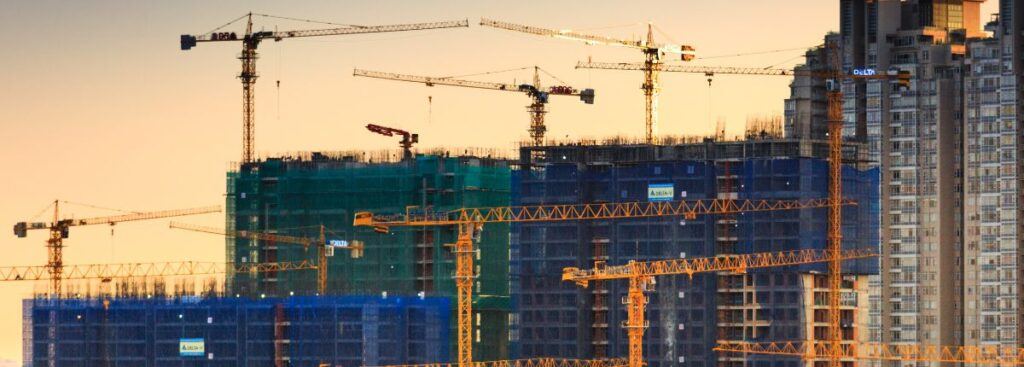I’m going to give you a lay of the land concerning building construction in Trinidad and Tobago. This isn’t just about bricks and mortar; it’s a vital part of the islands’ economic engine. You’re going to find out about how construction projects range from residential buildings to commercial and infrastructural developments that shape the very skyline of these Caribbean gems.
In my opinion, understanding the emerging trends in this sector is crucial. We’re seeing an increase in both local and foreign investment that’s driving the industry forward. But this growth comes with its own set of challenges, most notably in the areas of resource management, skilled labor, and regulatory compliance, all of which have a significant impact on project timelines and costs.

Construction in Trinidad and Tobago isn’t immune to the winds of change. We see a slow but steady move towards sustainable materials and practices, though traditional construction methods still dominate. Innovations are being integrated selectively, with some forward-thinking industry players leading the charge.
In the next section, we dive deeper into this web of complexity. I’ll demystify the local building codes and regulations. Whatever your stake might be in Trinidad and Tobago’s construction arena, knowing your way around these rules isn’t just important—it’s absolutely essential.
Navigating the Regulatory Framework and Building Codes
If you want to engage in construction in Trinidad and Tobago, you’re going to need to get intimate with the local building codes and regulations. These are the rulebooks for safety, design, and sustainability that guide your project from blueprint to completion.
Don’t worry too much about getting lost in a sea of legalese. The Trinidad and Tobago Bureau of Standards (TTBS) is your go-to source for all the standards and guidelines needed to stay on track. They’re in charge of ensuring that construction practices align with national and international safety requirements, which is key for any successful build.

Compliance isn’t just a hoop to jump through—it’s essential for the approval of construction projects. It ensures that buildings can withstand local environmental stresses, like the hurricanes that sometimes sweep through the islands. Plus, getting everything by-the-book up front can save you from expensive corrections down the line.
The push for sustainable development is echoed in the regulatory framework as well. Collaborating with local authorities early on helps integrate eco-conscious practices into your project, setting you up for a smoother approval process and a greener footprint. This commitment to sustainability dovetails seamlessly with the burgeoning eco-awareness in Trinidadian construction.
Sustainability and Innovation in Trinidadian Construction
I’m going to walk you through the eco-friendly transformation shaping construction in Trinidad and Tobago. This isn’t just about reducing carbon footprints; it’s also about innovative approaches that help preserve the islands’ unique environment while fueling economic growth.
The islands have seen a rise in green building initiatives. From energy-efficient lighting to rainwater harvesting systems, Trinidad and Tobago are embracing techniques that make buildings more sustainable. You’re going to find out about a few standout projects that illustrate just how serious the country is about sustainable development.

Technology is also reshaping the construction landscape. Building Information Modeling (BIM) and prefabricated construction methods are streamlining processes, cutting costs, and reducing waste. And let’s not overlook the advent of smart buildings. Fitted with sensors and systems managed by AI, they optimize energy use and improve living and working environments.
Don’t worry too much about these changes overwhelming the traditional customs. Innovative approaches are designed to complement local building techniques, not replace them. It’s about combining the best of traditional knowledge with modern technology.
Your curiosity might be piqued about the government’s role in this shift. Well, initiatives like tax incentives for energy-efficient buildings and training programs for green construction practices show that this movement has robust backing.
Choose to look at this as a preview because, in the next section, I’m diving into who’s driving these developments and what the future might hold. Let’s just say, there’s plenty of opportunity, and the industry’s trajectory suggests vibrant growth and an enduring commitment to innovation.
Key Players and Future Outlook of the Building Industry
Diving into the key players, Trinidad and Tobago boast a variety of major construction firms that are the backbone of the industry. From multinational companies to local powerhouses, these entities not only design the skylines but also shape the economy. They’re responsible for landmark projects that alter the country’s infrastructure landscape while providing employment to thousands.

You’re going to find out about the importance of foreign investment as it plays a pivotal role in the construction sector. International partnerships have introduced new standards, practices, and even greater economic opportunities, fostering an environment that is vibrant and malleable to global trends.
Looking ahead, the industry shows promising growth potential. Upcoming projects, both governmental and private, offer a glimpse into the country’s progressive planning. This repertoire of projects not only aims to modernize the islands but also to cater to the growing needs of its population.
I’m here to help you understand how critical workforce development is, and how it paves the way for sustainable growth. Investing in education and training programs helps ensure that the local workforce is skilled to meet the demands of an evolving industry, thereby elevating the overall standard of construction nationwide.

